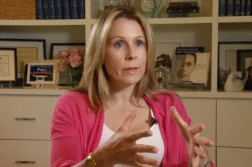INDIANAPOLIS, Ind. (Ivanhoe Newswire) — Researchers are taking a new approach to understanding the origins of breast cancer. They’re studying healthy breast tissue. And the results offer a new look into how and where breast cancer develops.
The female breast contains billions of cells. But researchers are narrowing down specific cells most susceptible to breast cancer.
“Eighty percent of the breast cancer originates from a single cell type in the breast,” explained Harikrishna Nakshatri, BVSc., PhD, Professor of Breast Cancer Research at the IU Simon Comprehensive Cancer Center.
Using healthy breast tissue donated from women of diverse ancestries, researchers have created an extensive map of the cells in the breast. Now they can compare healthy cells to cancerous ones. A step Prof. Nakshatri says has been a missing link for years.
“Now we can go much more precise in figuring out from where the cancer originated and what is the fundamental difference between a cancer cell and its normal counterpart,” he said.
“We are making tremendous strides in breast cancer research,” said Stephanie Lesher.
Lesher is passionate about helping the breast cancer community. For her, it’s personal.
“My mom is a two-time breast cancer survivor,” she explained.
Lesher has donated healthy breast tissue for research three times.
“It’s such a tangible way to contribute and feel like you’re really making an impact,” she told Ivanhoe.
Prof. Nakshatri says this data will help him and researchers around the world better understand breast cancer at a cellular level and address biological and ancestral aspects as well.
“Unless you know what is normal, you can’t figure out what is abnormal,” he stated.
Previous, similar research used normal tissue collected from breast cancer surgeries or from reduction mammoplasty. But cancer can affect the surrounding tissue. This study is unique because it’s the first to use tissue from women who are clinically free of breast cancer. Prof. Nakshatri says it will help them design better therapies in the future and possibly ways to diagnose earlier as well.
Contributors to this news report include: Lindsay Dailey, Producer; Kyle Fisher, Videographer; Roque Correa, Editor.
To receive a free weekly e-mail on medical breakthroughs from Ivanhoe, sign up at: http://www.ivanhoe.com/ftk
Source:
https://medicine.iu.edu/news/2024/08/breast-cell-atlas-nature-publication
FOR MORE INFORMATION, PLEASE CONTACT:
Harikrishna Nakshatri, BVCS., PhD
Professor of Breast Cancer Research at IU Simon Comprehensive Cancer Center
If this story or any other Ivanhoe story has impacted your life or prompted you or someone you know to seek or change treatments, please let us know by contacting Marjorie Bekaert Thomas at mthomas@ivanhoe.com



